Beneath the ocean’s shimmering surface lies a world teeming with life, where some of the most captivating creatures often go unnoticed. Among these silent wonders is the sea anemone, a marine invertebrate frequently mistaken for a vibrant underwater flower. Far from being a plant, this fascinating animal is a formidable predator and a vital component of marine ecosystems worldwide. Its seemingly simple structure belies a complex biology and an ancient lineage, offering endless intrigue for marine enthusiasts, students, and seasoned zoologists alike.
Delving into the life of the sea anemone reveals a creature of remarkable adaptability, intricate interactions, and surprising resilience. From its unique hunting strategies to its diverse reproductive methods and its crucial role in supporting other marine species, the sea anemone is a testament to the ocean’s boundless biodiversity. This comprehensive guide explores every facet of these captivating cnidarians, providing insights for anyone eager to understand the true nature of the “flower of the sea.”

What Exactly Are Sea Anemones?
Sea anemones belong to the phylum Cnidaria, a group that also includes corals, jellyfish, and hydras. They are classified within the class Anthozoa, meaning “flower animals,” a fitting description for their often colorful and petal-like appearance. Unlike their free-swimming jellyfish relatives, sea anemones are typically sessile polyps, meaning they spend most of their lives attached to a substrate.
Their basic body plan is a cylindrical column, often wider at the base (the pedal disc) which attaches to rocks, shells, or even sand. At the top of the column is an oral disc, surrounded by a ring of tentacles. These tentacles are armed with specialized stinging cells called nematocysts, a hallmark of all cnidarians. When triggered, these microscopic harpoons inject venom, paralyzing prey or deterring predators. The central mouth on the oral disc serves as both an entrance for food and an exit for waste, as anemones possess a sac-like digestive system with only one opening.
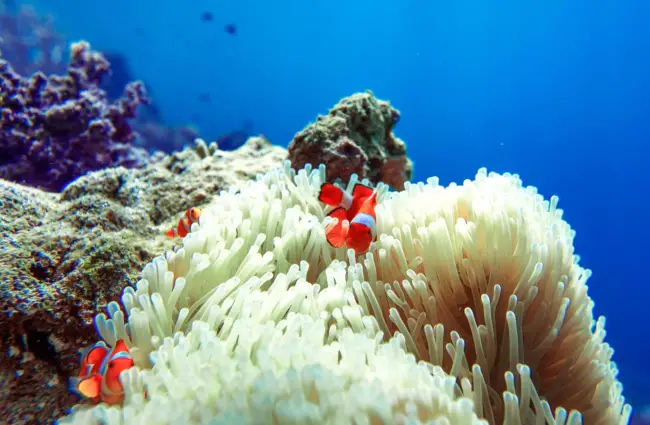
A World of Habitats: Where to Find Sea Anemones
Sea anemones are incredibly widespread, inhabiting oceans across the globe, from the frigid polar regions to the warm tropical seas. Their adaptability allows them to thrive in a diverse range of marine environments, making them accessible to observant animal lovers and crucial subjects for ecological studies.
Preferred Environments
- Intertidal Zones: Many species are found in tide pools and rocky shores, where they are exposed to air during low tide. These anemones often retract their tentacles and close up to conserve moisture and protect themselves from predators and desiccation. Examples include the aggregating anemone (Anthopleura elegantissima) and the giant green anemone (Anthopleura xanthogrammica).
- Coral Reefs: Tropical reefs are home to a spectacular array of anemone species, often brightly colored and forming symbiotic relationships with other reef inhabitants.
- Deep Sea: Some anemones have adapted to the extreme pressures and cold temperatures of the abyssal plains, often attaching to rocks or even hydrothermal vents.
- Soft Sediments: Certain species burrow into sand or mud, leaving only their oral disc and tentacles exposed to catch passing prey.
How to Find One in the Wild
For the aspiring marine enthusiast, finding sea anemones in their natural habitat can be a rewarding experience. The best places to look are:
- Tide Pools: During low tide, explore rocky shorelines. Look for colorful, often gelatinous blobs attached to rocks in pools of water. When submerged, their tentacles will be extended.
- Piers and Docks: The pilings of piers and docks often provide a stable substrate for anemones to attach, especially in areas with good water flow.
- Snorkeling or Diving: In warmer waters, snorkeling or diving over coral reefs will reveal a multitude of anemone species, often hosting clownfish or other symbiotic partners.
When observing sea anemones in the wild, it is paramount to practice responsible wildlife viewing. Avoid touching them, as their stinging cells can cause irritation, and disturbing them can stress the animal. Simply observe and appreciate their beauty from a respectful distance.

The Anemone’s Dinner Plate: Diet and Hunting Strategies
Despite their sessile nature, sea anemones are efficient and opportunistic carnivores. Their diet is varied, reflecting the availability of prey in their specific habitats.
What They Eat
- Plankton: Microscopic organisms drifting in the water column form a significant part of the diet for many smaller anemone species.
- Small Fish: Larger anemones can capture and consume small fish that venture too close to their stinging tentacles.
- Crustaceans: Shrimp, crabs, and other small crustaceans are common prey items.
- Detritus: Some species are known to consume organic debris and particulate matter from the water.
Hunting Techniques
The primary hunting tool of the sea anemone is its array of tentacles, each laden with thousands of nematocysts. These specialized cells contain a coiled, barbed thread that, upon contact, rapidly discharges, injecting venom into the prey. The venom paralyzes the victim, allowing the anemone to manipulate it towards its central mouth. Once ingested, the prey is digested within the gastrovascular cavity, and any undigested waste is expelled back out through the mouth.
Some anemones also employ sticky secretions on their tentacles to ensnare prey, while others have developed unique symbiotic relationships that aid in food acquisition, such as hosting photosynthetic algae (zooxanthellae) within their tissues, which provide the anemone with nutrients produced through photosynthesis.
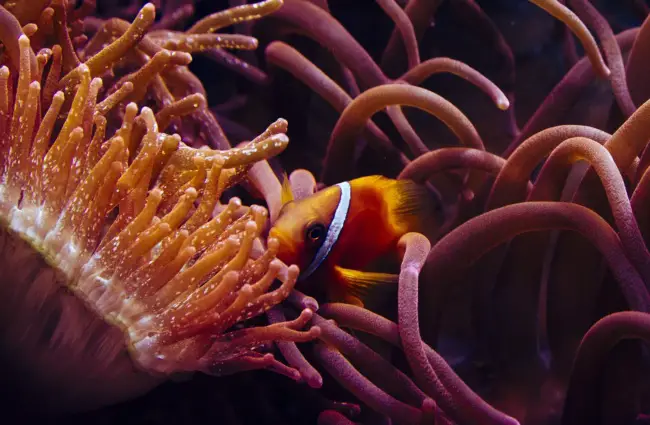
An Ancient Lineage: Sea Anemone Evolution
The evolutionary history of sea anemones is a testament to their remarkable success and resilience. As members of the phylum Cnidaria, they represent one of the oldest animal lineages on Earth, with fossil evidence suggesting their ancestors date back hundreds of millions of years.
Early Origins
Cnidarians are believed to have evolved from a common ancestor with radial symmetry, a body plan characterized by arrangement around a central axis. This simple yet effective design has allowed them to persist through numerous geological eras. The polyp form, characteristic of sea anemones, is considered one of the ancestral forms within the Cnidaria, predating the medusa (jellyfish) form in some evolutionary models.
Evolutionary Adaptations
Over vast stretches of time, sea anemones have diversified into thousands of species, adapting to an incredible range of marine environments. Key evolutionary developments include:
- Nematocyst Specialization: The stinging cells have evolved into various types, each optimized for different functions, from prey capture to defense.
- Symbiotic Relationships: The ability to form mutualistic relationships, particularly with photosynthetic algae (zooxanthellae) and various fish and crustaceans, has been a significant evolutionary advantage, allowing them to thrive in nutrient-poor environments.
- Reproductive Flexibility: The evolution of both asexual and sexual reproductive strategies has enhanced their ability to colonize new areas and adapt to changing environmental conditions.
Studying the genetics and morphology of modern sea anemones provides valuable insights into the early evolution of multicellular animals and the diversification of life in the oceans.
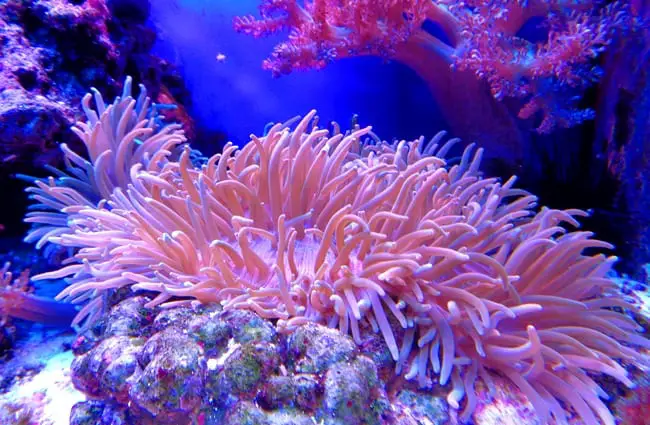
The Dance of Life: Mating and Reproduction
Sea anemones exhibit a fascinating array of reproductive strategies, combining both asexual and sexual methods to ensure the continuation of their species. This versatility contributes significantly to their ecological success and widespread distribution.
Asexual Reproduction
Asexual reproduction allows a single anemone to produce genetically identical offspring, a rapid and efficient way to colonize new areas or recover from injury. Common asexual methods include:
- Budding: A small, miniature anemone grows directly from the side of the parent’s body and eventually detaches.
- Fission (Longitudinal or Transverse): The anemone literally splits itself in half, either lengthwise (longitudinal fission) or across its body (transverse fission), forming two new individuals.
- Pedal Laceration: As the anemone moves, small fragments of its pedal disc (base) can break off. Each fragment then regenerates into a complete new anemone. This is a common method for species like the aggregating anemone.
Sexual Reproduction
Sexual reproduction introduces genetic diversity, which is crucial for adaptation to changing environments. Most sea anemones are dioecious, meaning individuals are either male or female, though some are hermaphroditic.
- Gamete Release: Males release sperm and females release eggs into the water column, a process known as broadcast spawning.
- External Fertilization: Fertilization occurs in the open water, forming a zygote.
- Larval Stage: The zygote develops into a free-swimming planula larva. This larval stage is crucial for dispersal, allowing anemones to colonize new habitats far from the parent.
- Settlement and Metamorphosis: After a period of drifting, the planula larva settles onto a suitable substrate and undergoes metamorphosis, transforming into a small polyp that grows into an adult anemone.
Some species exhibit internal fertilization or brood their larvae internally, releasing miniature anemones directly into the water, bypassing the free-swimming larval stage.

Architects of the Ecosystem: Contribution and Interactions
Sea anemones are not just passive inhabitants of the ocean; they are active participants in complex ecological webs, contributing significantly to the health and biodiversity of marine environments. Their interactions range from iconic mutualistic partnerships to predatory roles.
Symbiotic Relationships
Perhaps the most famous interaction is the mutualistic relationship between sea anemones and clownfish. Clownfish are immune to the anemone’s stings and find shelter among its tentacles, protected from predators. In return, the clownfish may clean the anemone, drive away potential predators, and even bring food scraps to its host. Other symbiotic partners include:
- Hermit Crabs: Some hermit crabs carry anemones on their shells for camouflage and defense. The anemone benefits from mobility and access to new feeding grounds.
- Shrimp: Certain shrimp species also find refuge within anemone tentacles.
- Zooxanthellae: Many anemones host symbiotic algae (zooxanthellae) within their tissues. These algae perform photosynthesis, providing the anemone with sugars and oxygen, while the anemone offers the algae a protected environment and access to light and nutrients.
Predator and Prey
As predators, anemones help control populations of small invertebrates and fish. Conversely, they are also prey for a variety of marine animals, including:
- Sea Slugs (Nudibranchs): Some nudibranchs are specialized predators of sea anemones, and remarkably, some can even incorporate the anemone’s stinging cells into their own tissues for defense.
- Sea Stars: Certain species of starfish are known to feed on anemones.
- Fish: A few fish species, such as some butterflyfish, will nip at anemone tentacles.
Habitat Provision
Beyond direct interactions, large aggregations of sea anemones can create microhabitats, providing shelter and feeding grounds for a variety of smaller marine invertebrates and juvenile fish, thus increasing local biodiversity.

Sea Anemones and Humanity
The interaction between sea anemones and humans spans various domains, from scientific research and cultural fascination to practical applications and conservation concerns.
Contribution to Human Culture
Sea anemones have captivated human imagination for centuries. Their flower-like appearance has inspired art, literature, and folklore, often symbolizing beauty, hidden dangers, and the mysteries of the deep. The iconic relationship between clownfish and anemones gained widespread popular recognition through animated films, sparking interest in marine biology for a new generation.
Scientific and Medical Research
The unique biology of sea anemones makes them valuable subjects for scientific research:
- Neuroscience: Their relatively simple nervous systems and potent venoms are studied for insights into nerve function and potential pharmaceutical applications.
- Biotechnology: Compounds found in anemone venom are being investigated for their potential as painkillers, anti-inflammatory agents, and even anti-cancer drugs.
- Evolutionary Biology: As ancient cnidarians, they offer clues to the early evolution of animal life and the development of complex traits.
Aquarium Trade and Conservation
The vibrant colors and intriguing behaviors of sea anemones make them popular additions to home and public aquariums. However, this demand can sometimes lead to unsustainable collection practices in the wild. Conservation efforts focus on:
- Sustainable Aquaculture: Developing methods to breed anemones in captivity reduces pressure on wild populations.
- Habitat Protection: Protecting coral reefs and other marine environments where anemones thrive is crucial for their survival.
- Public Education: Raising awareness about the ecological importance of anemones and the impact of human activities on marine ecosystems.

Practical Encounters and Care
Whether encountering a sea anemone in its natural habitat or caring for one in a controlled environment, understanding best practices is essential for both human safety and the well-being of these fascinating creatures.
For the Hiker: Encountering Sea Anemones in the Wild
If you are exploring tide pools or rocky shorelines and come across a sea anemone, remember these guidelines:
- Observe, Do Not Touch: While most anemone stings are mild for humans, causing only a slight irritation or rash, some species can deliver a more potent sting. It is always best to avoid direct contact.
- Respect Their Habitat: Do not remove anemones from their attachment points, as this can severely injure or kill them. Avoid disturbing the rocks or substrate they are attached to.
- Mind Your Step: Be careful where you walk in tide pools to avoid accidentally stepping on marine life, including anemones that may be retracted and camouflaged.
- Leave No Trace: Take only pictures, leave only footprints. Ensure the environment is left undisturbed for others to enjoy.
For the Zookeeper: Caring for Sea Anemones in Captivity
Caring for sea anemones in an aquarium setting requires specific knowledge and diligent attention to their environmental needs:
- Water Quality: Maintaining stable and pristine water parameters is paramount. This includes appropriate salinity (typically 1.023-1.026 specific gravity), temperature (species-dependent, but often 72-78°F for tropical species), pH (8.1-8.4), and low levels of nitrates and phosphates. Regular water changes and robust filtration are essential.
- Lighting: For anemones hosting zooxanthellae, strong, appropriate spectrum lighting (e.g., metal halide, T5, or LED reef lights) is crucial for their photosynthetic symbionts.
- Water Flow: Moderate to strong, turbulent water flow is often preferred, mimicking their natural environment and helping to bring food particles to their tentacles.
- Substrate and Attachment: Provide stable rockwork or a suitable substrate for the anemone to attach its pedal disc. Anemones will move if they are not happy with their location, so ensure there are plenty of options.
- Feeding: Supplement their diet with small pieces of marine-grade meaty foods, such as shrimp, fish, or mussels, 1-3 times per week, depending on the species and size. Ensure the food is small enough for them to ingest.
- Tank Mates: Choose tank mates carefully. Avoid fish that are known to nip at anemones or other invertebrates that might harm them. If housing clownfish, ensure the anemone species is a suitable host.
- Avoidance:
- Sudden Parameter Changes: Anemones are sensitive to rapid shifts in water chemistry.
- Overfeeding: Can lead to poor water quality.
- Incompatible Tank Mates: Can stress or injure the anemone.
- Handling: Minimize direct handling, as it can damage their delicate tissues and cause them to sting.

The sea anemone, often overlooked as a mere decoration of the ocean floor, is in fact a marvel of marine biology. From its ancient origins and diverse habitats to its intricate hunting mechanisms and complex reproductive strategies, this “flower of the sea” plays an indispensable role in the health and balance of marine ecosystems. Understanding these captivating creatures not only enriches our appreciation for the natural world but also underscores the importance of conservation efforts to protect these vital components of our planet’s oceans. Whether you are a curious observer, a dedicated student, or a seasoned aquarist, the sea anemone offers a boundless source of wonder and scientific inquiry.

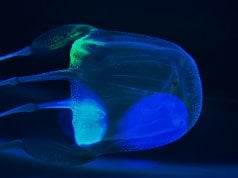
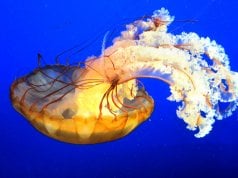
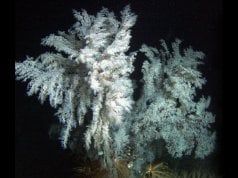


![Red Angus Closeup of a beautiful Red Angus cowPhoto by: U.S. Department of Agriculture [pubic domain]https://creativecommons.org/licenses/by/2.0/](https://animals.net/wp-content/uploads/2020/03/Red-Angus-4-100x75.jpg)

